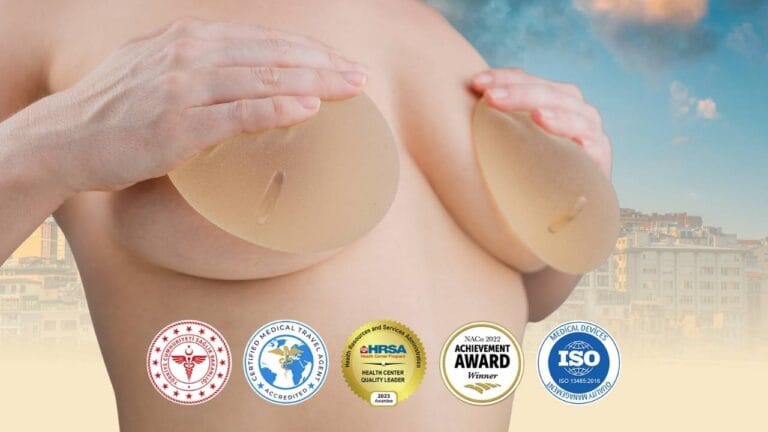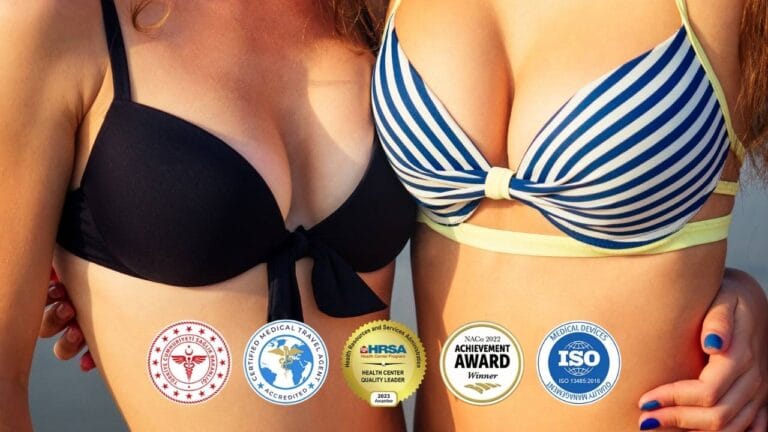Choosing to undergo Inverted nipple surgery in Turkey is a deeply personal decision that addresses both aesthetic self-consciousness and functional challenges like hygiene or breastfeeding difficulties. We understand that for many women and men, this condition can be a source of anxiety regarding intimacy and body image. Clinic Care Center provides a discreet, medically precise solution to release the tethered tissue and restore natural projection.
Do You Have Grade 1, 2, or 3 Inversion? (The Scale)
Before determining the surgical approach, we must medically classify the severity of the inversion. The condition is caused by shortened lactiferous ducts (milk ducts) and fibrotic bands of tissue that pull the nipple inward, preventing it from projecting.
- Grade 1 (Mild): The nipple can be pulled out easily (manually or with cold) and maintains its projection for some time. This often requires minimal intervention.
- Grade 2 (Moderate): The nipple can be pulled out but retracts inwards almost immediately once released. The ducts are tighter here.
- Grade 3 (Severe): The nipple is severely constricted and cannot be pulled out at all, even with manipulation. This usually indicates very short milk ducts and significant fibrosis requiring surgical release.
Clinic Care Center: Expert Warning (Breastfeeding)
The most critical decision in inverted nipple surgery concerns breastfeeding. For severe cases (Grade 3), the milk ducts are often too short and must be surgically cut (severed) to release the nipple outwards. If the ducts are cut, you will not be able to breastfeed from that breast in the future. We prioritize informed consent: if you plan to have children, we attempt ‘duct-sparing’ techniques, but in severe cases, this may lead to higher recurrence rates.
Surgical Techniques: Duct-Sparing vs. Complete Release
The technique selected by your surgeon will depend entirely on your grade of inversion and your future plans for breastfeeding.
| Feature | Duct-Sparing Technique (Preservation) | Complete Duct Release (Severing) |
|---|---|---|
| Best For | Grade 1 and mild Grade 2. | Severe Grade 3 (Permanent inversion). |
| Method | Sutures are used to cinch the base of the nipple to prop it up. The internal milk ducts remain intact. | Constricted milk ducts and tight fibrous bands are surgically cut to free the nipple tension. |
| Breastfeeding | Preserved. Milk ducts remain functional. | Impossible. The pathways for milk are severed. |
| Recurrence Risk | Moderate. Because the tension remains, the nipple may pull back in over time. | Low. The tethering cause is physically removed. |
| Sensation | Usually preserved. | Risk of reduced sensation due to deeper cutting. |
Recovery and Sensation: What to Expect
This is a minor surgical procedure, often performed under local anesthesia, with a quick recovery time of 2 to 3 days. However, the biological impact requires understanding.
Sensation Risks: The nerves that provide sensation to the nipple run alongside the milk ducts. While our surgeons take extreme care, any manipulation of these tissues carries a risk. Temporary numbness is common as nerves recover from the trauma. In Grade 3 corrections where ducts are cut, there is a higher risk of permanent sensation loss.
Scarring: The incisions are microscopic and placed at the base of the nipple. Once healed, the scars are typically invisible to the naked eye.
Frequently Asked Questions about Nipple Correction
Is the surgery painful?
Most patients report very little pain. The procedure is typically performed under local anesthesia (numbing the area), so you feel nothing during surgery. Post-op discomfort is mild and manageable with standard painkillers.
Can inverted nipples come back after surgery?
Yes, recurrence is possible, especially with the duct-sparing technique. Because the short ducts are kept intact, they may eventually pull the nipple back in. Grade 3 corrections (cutting ducts) have the highest success rate for permanent projection.
Can I do this with breast augmentation?
Yes, combining nipple correction with breast implants or a breast lift is very common. The implant can actually help push the nipple out, providing support from the inside.
Will I lose nipple sensation?
It varies. Most patients retain sensation, but it may be diminished. In rare cases, or with aggressive correction of Grade 3 inversion, total loss of sensation can occur.
How long do I need to stay in Turkey?
Since this is a minor procedure, a stay of 2 to 3 days is usually sufficient for the surgery and a final check-up.
Does insurance cover this?
Generally, no. It is considered a cosmetic procedure. However, if the inversion causes chronic infections (mastitis), some international policies might cover it, but in medical tourism, it is typically a self-pay procedure.
What if my inversion is sudden?
Warning: If you have had normal nipples all your life and one suddenly inverts, do not seek cosmetic surgery immediately. Sudden inversion can be a sign of breast cancer. You must undergo a mammogram and ultrasound to rule out pathology first.
Aesthetic Confidence and Comfort.
Whether for aesthetic confidence or functional hygiene, correcting inverted nipples is a simple but precise procedure. At Clinic Care Center, we assess your grade carefully to protect your future breastfeeding goals whenever possible. Contact us today for a private, confidential consultation.
Also Read:
Breast Augmentation
Breast Lifting
Breast Reduction
Breast Implant Removal



